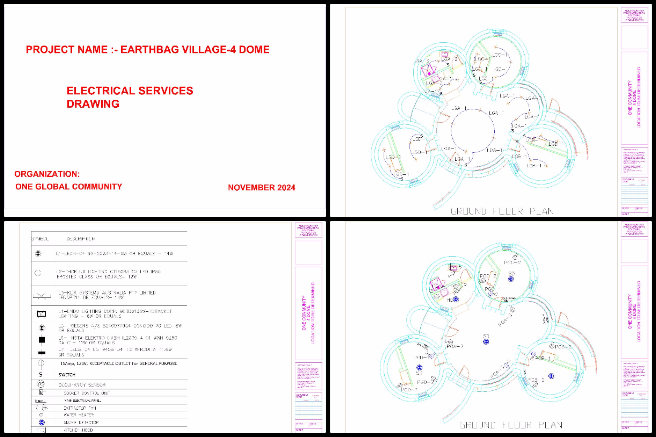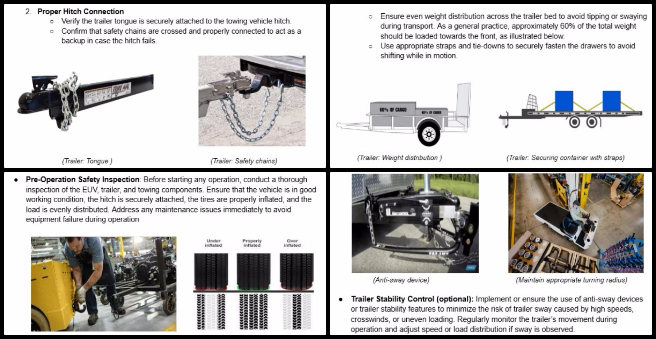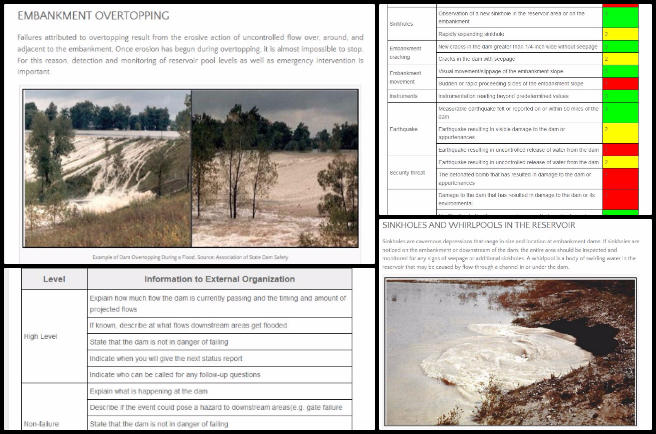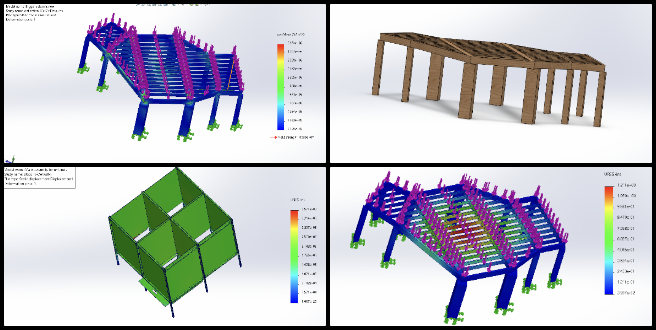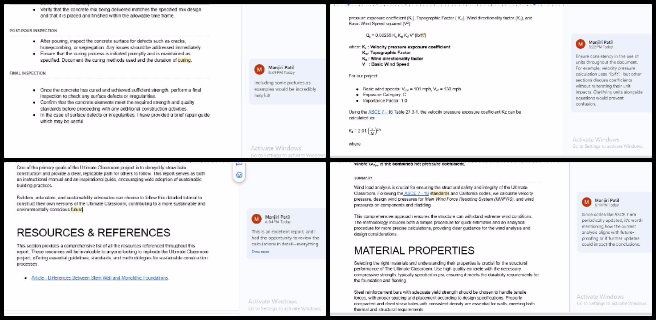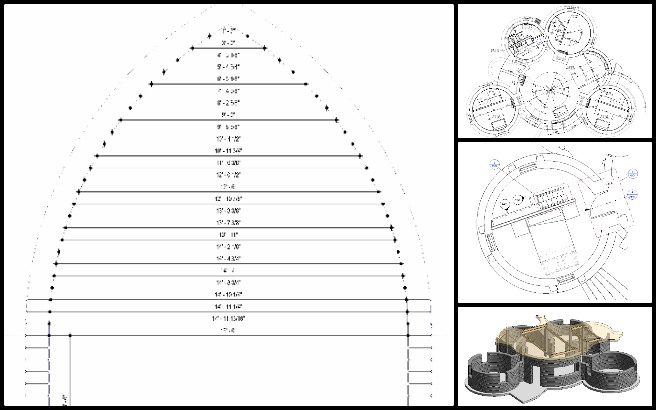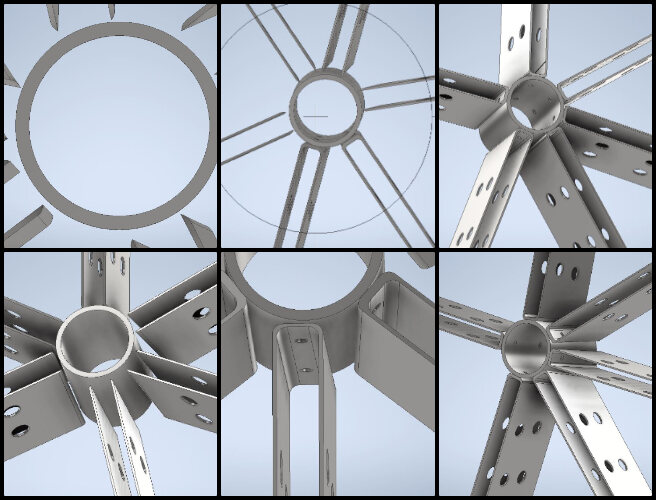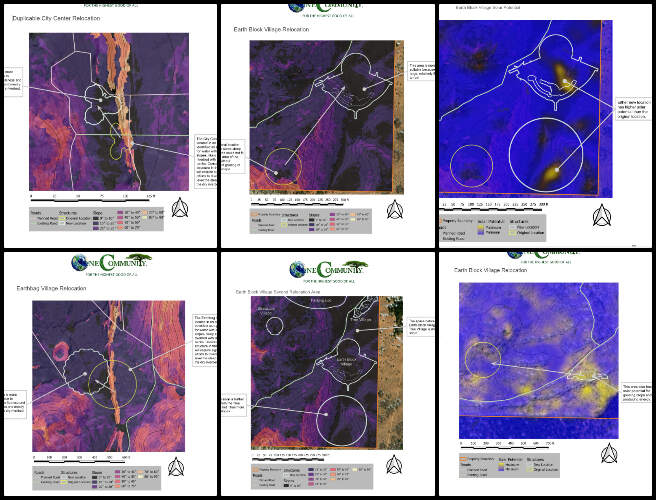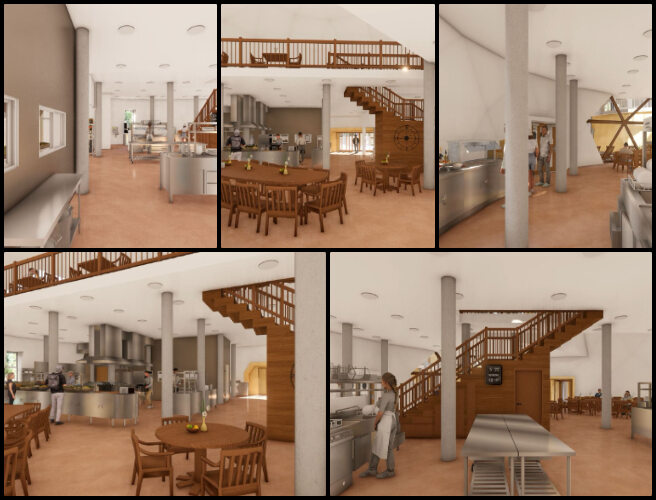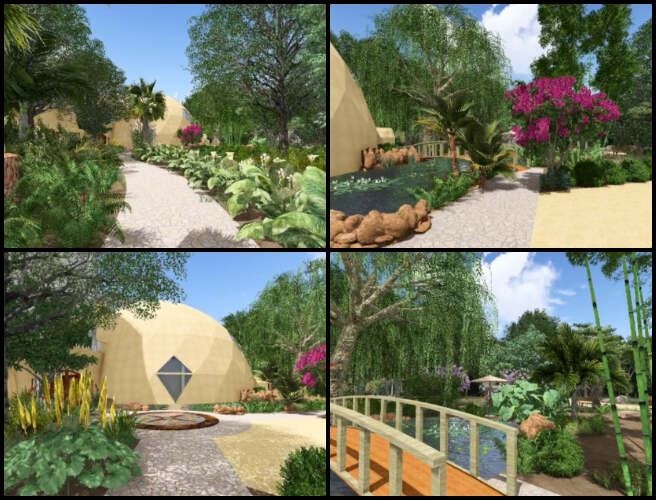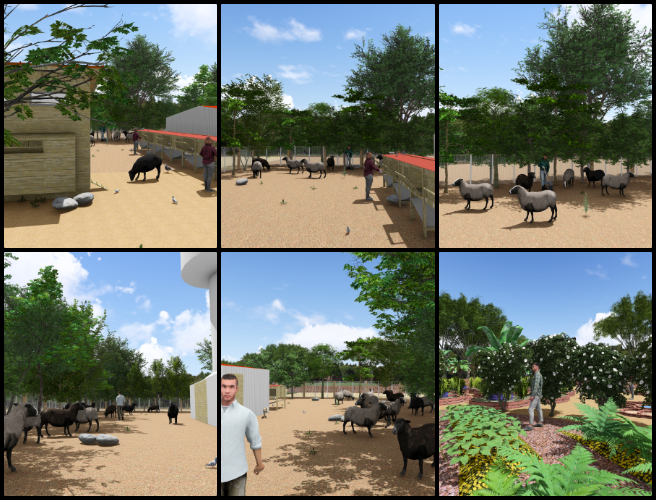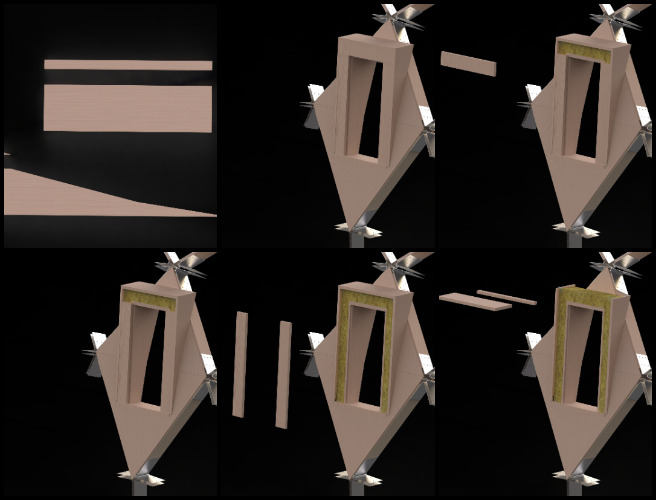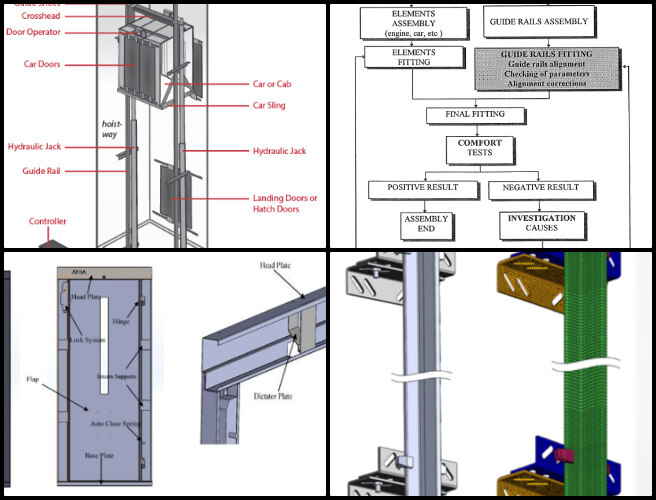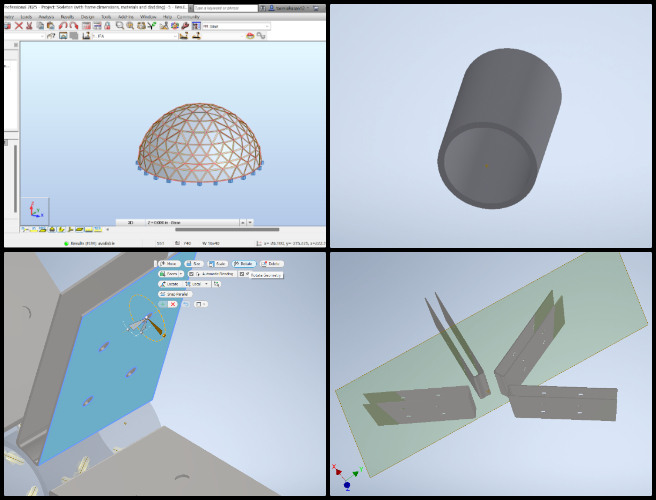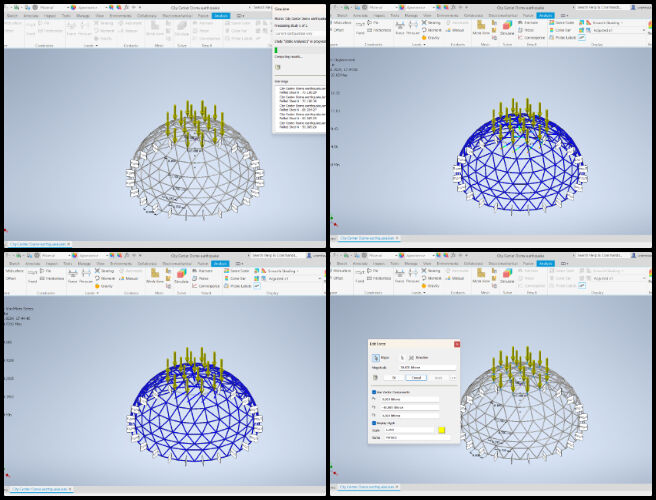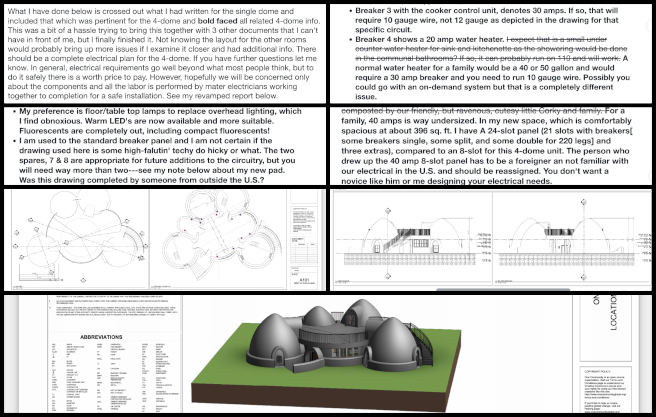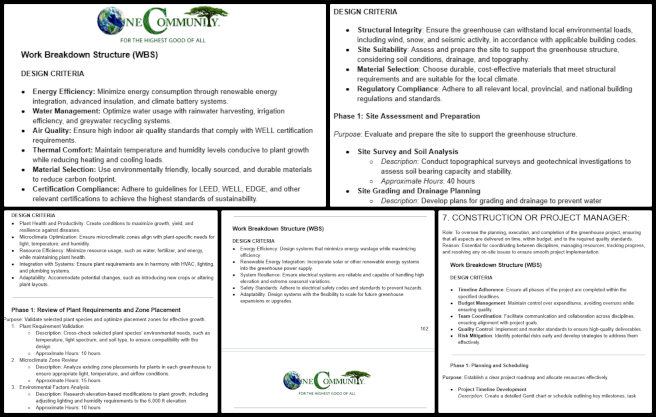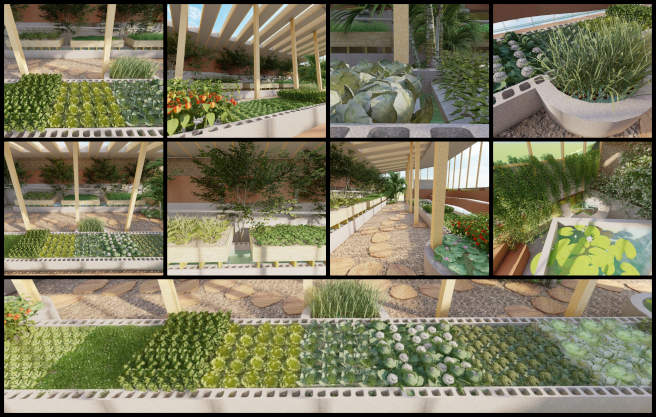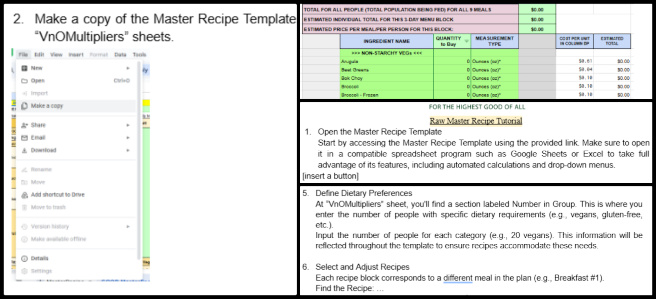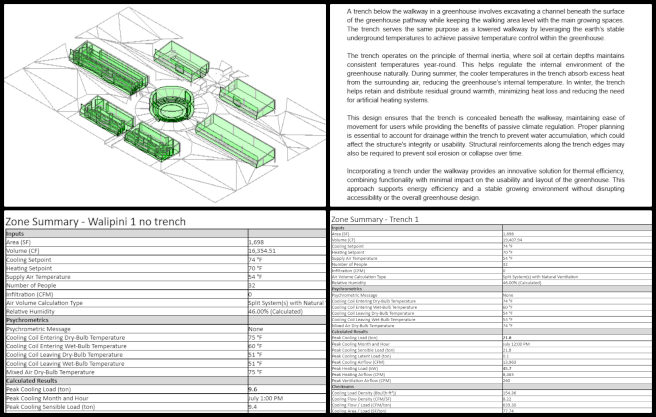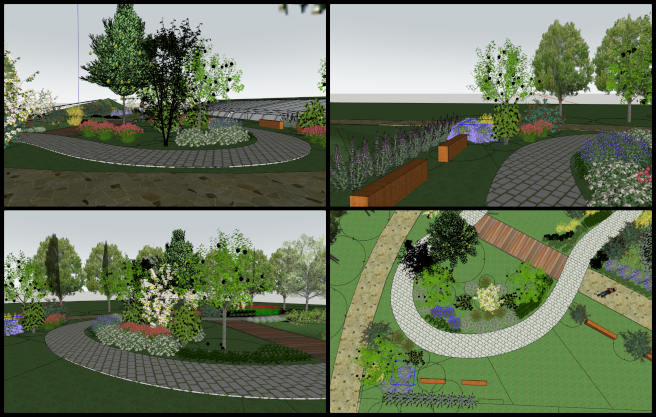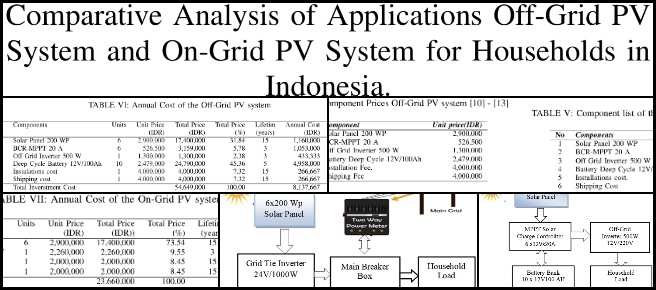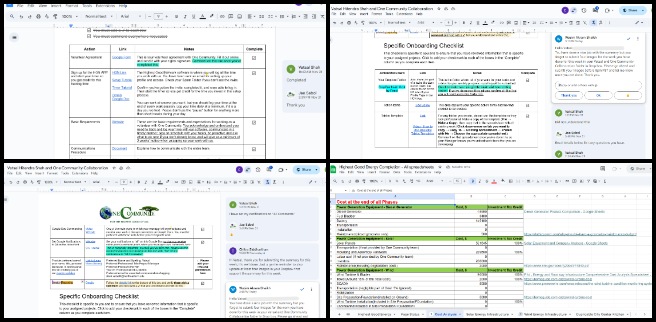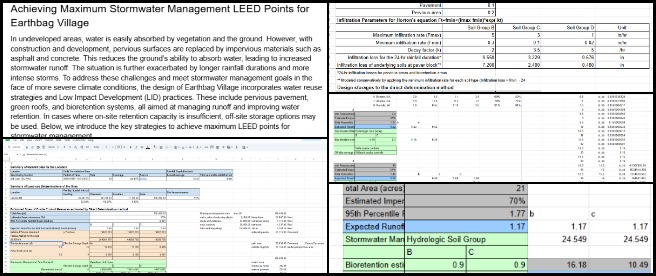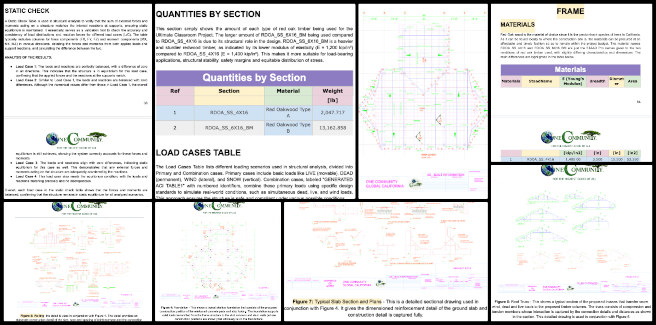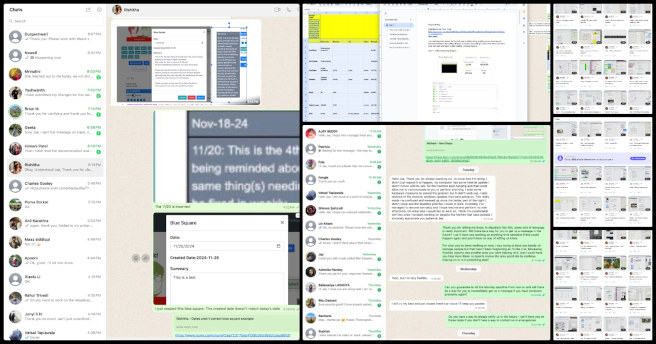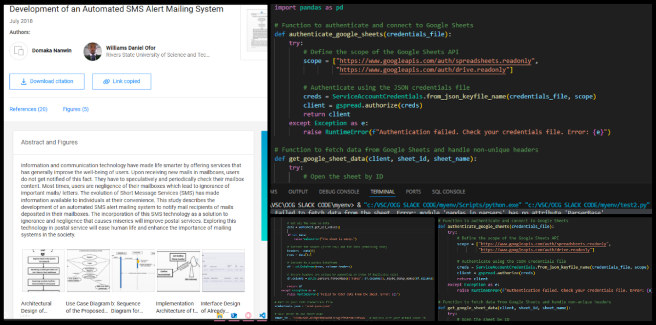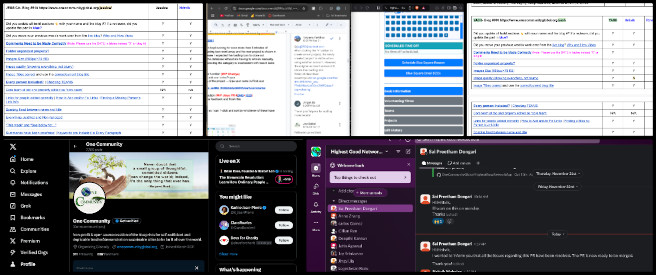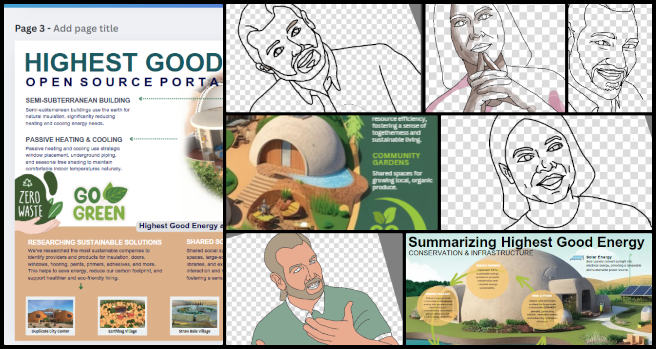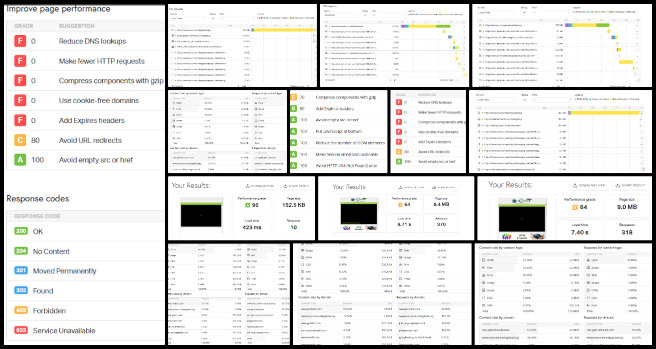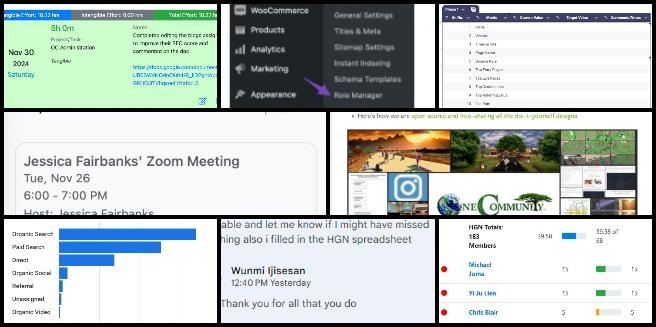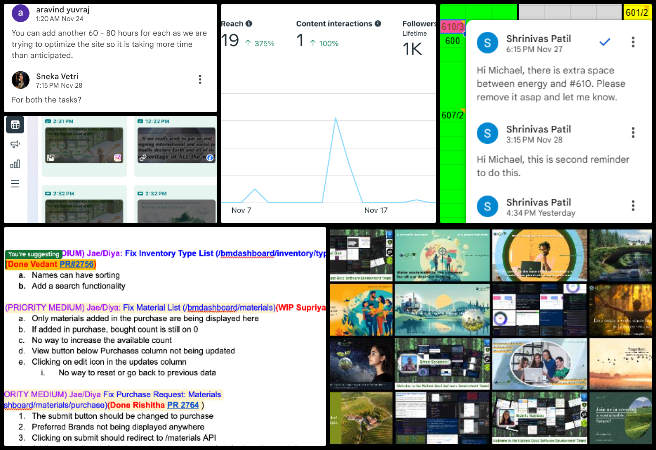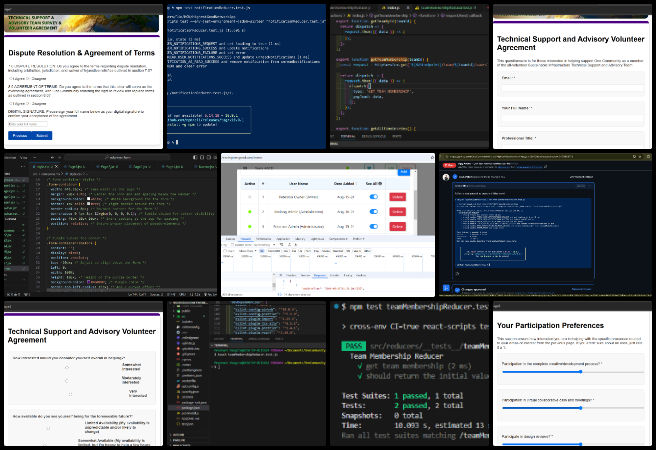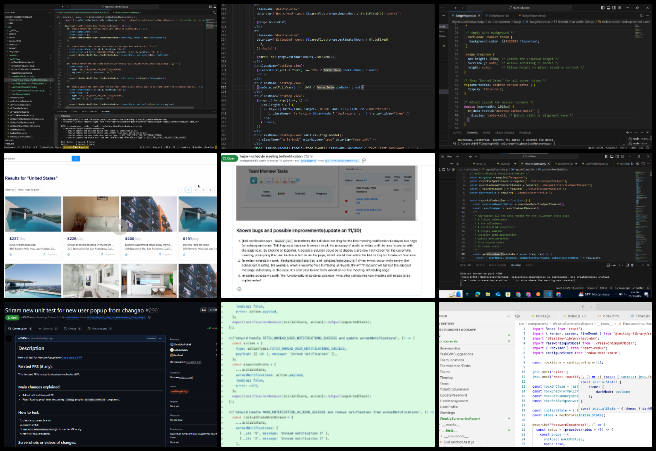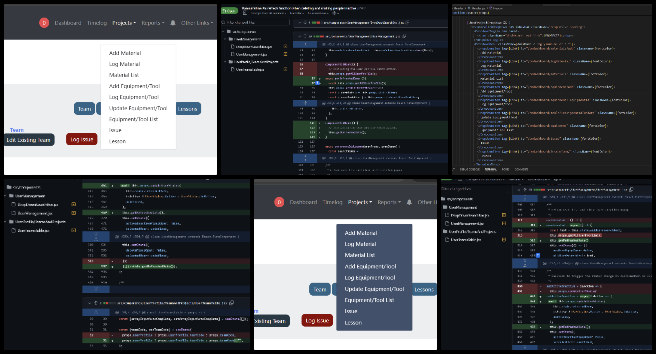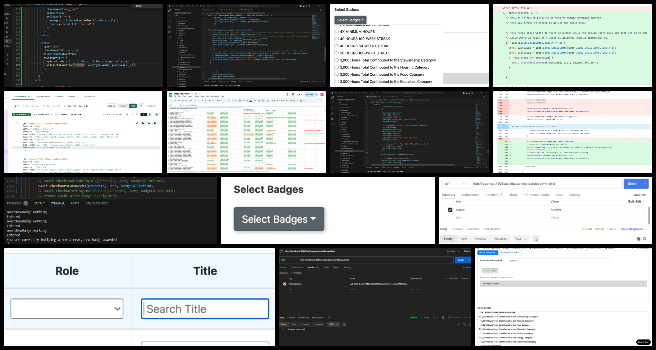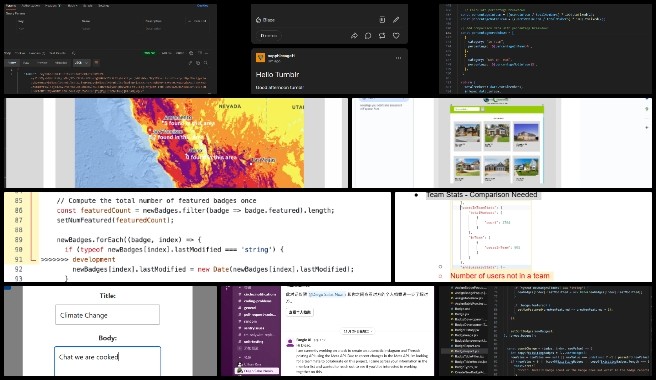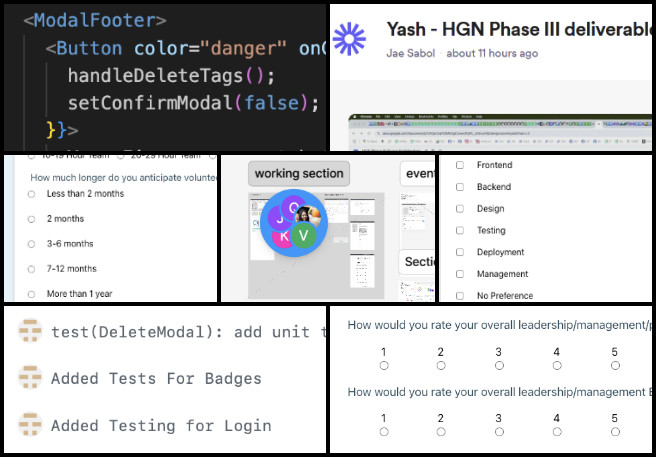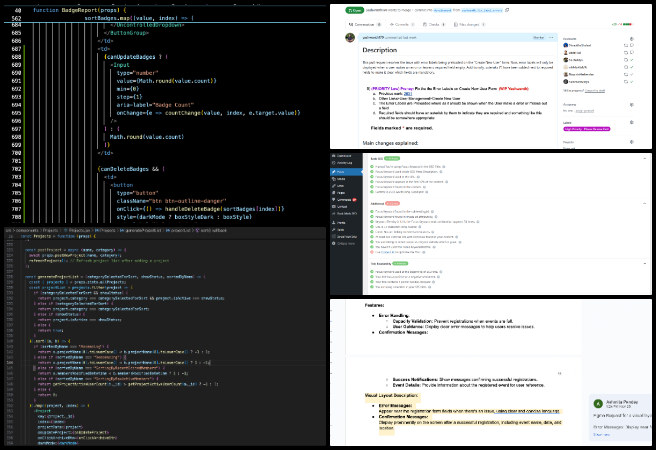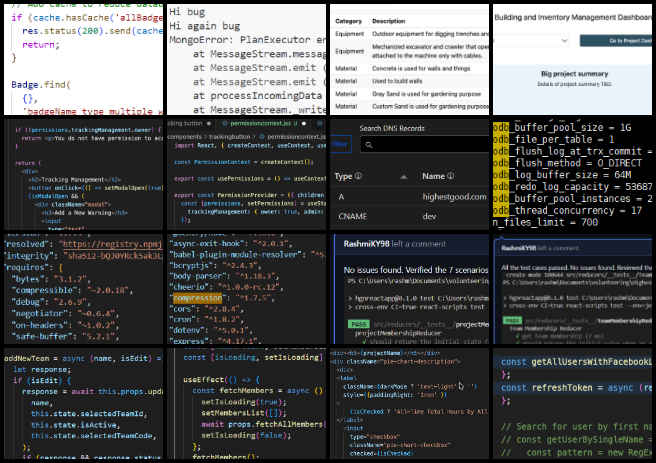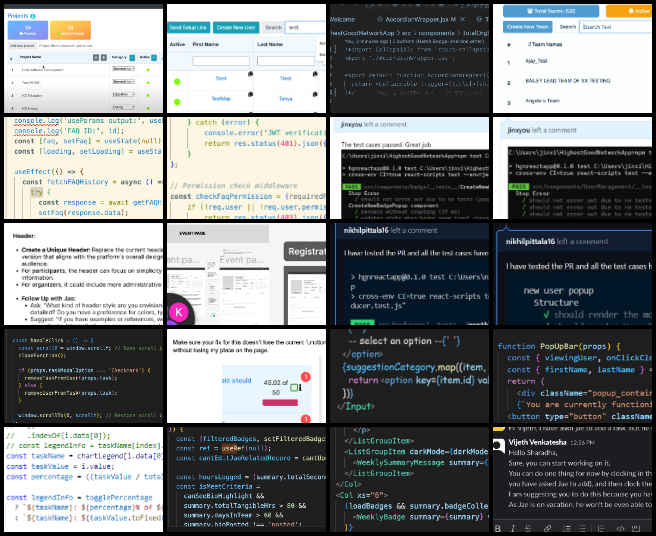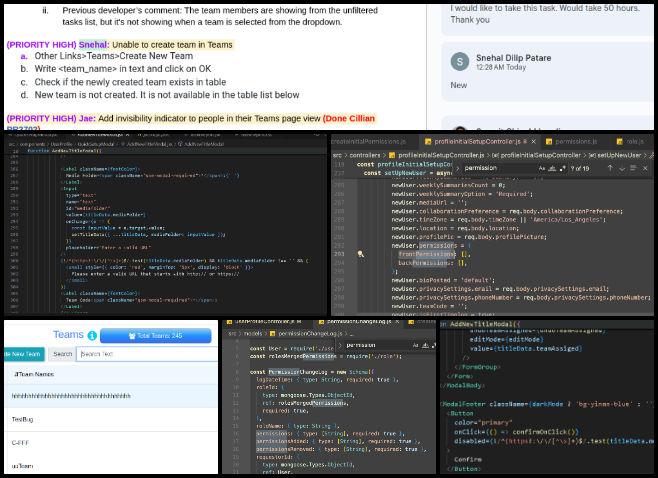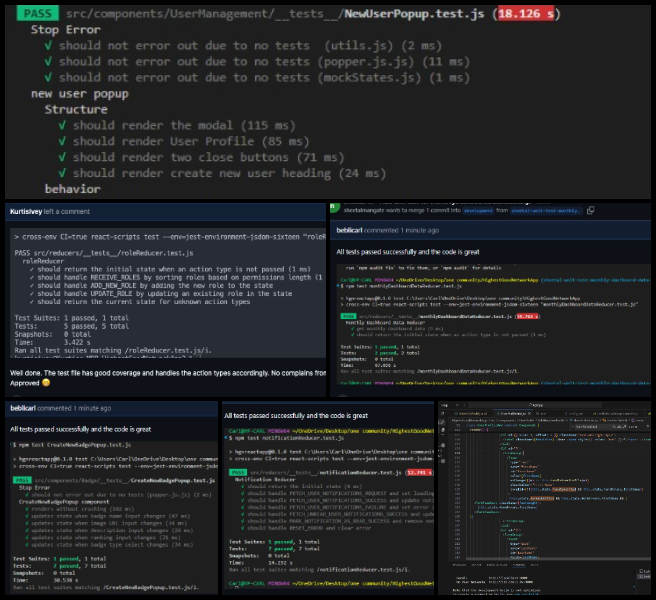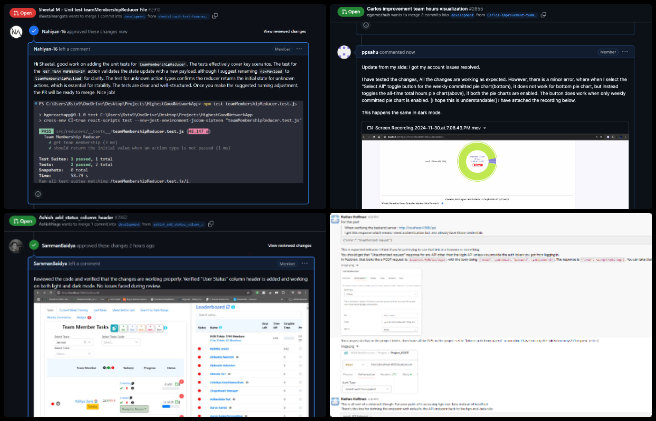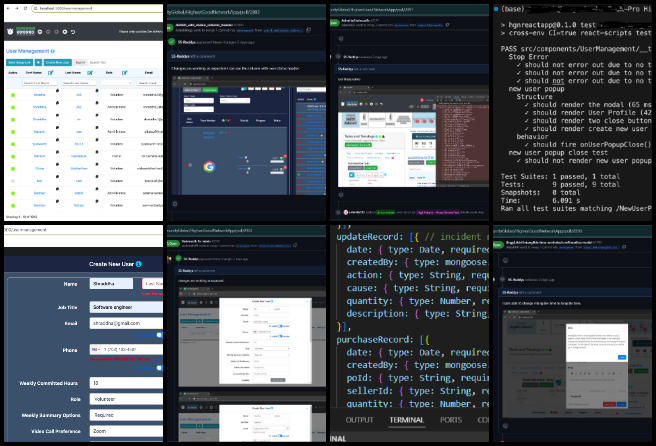Maximizing Eco-potential – One Community Weekly Progress Update #611
At One Community, we are maximizing eco-potential in a way that will regenerate our planet and create a world that works for everyone. Our all-volunteer team is focused on sustainable approaches to food, energy, housing, education, economics, and social architecture. By open sourcing and freely sharing sharing the complete process, we aim to build a self-replicating model that inspires a global collaboration of teacher/demonstration hubs, all for “The Highest Good of All.” Together, we are evolving sustainability and fostering global stewardship practices that promote fulfilled living and lasting impact.
- Here’s our project overview on maximizing eco-potential
- Here’s our world-change methodology
- Here’s how this becomes self-replicating
- Here’s how we are open source and free-sharing all the do-it-yourself designs
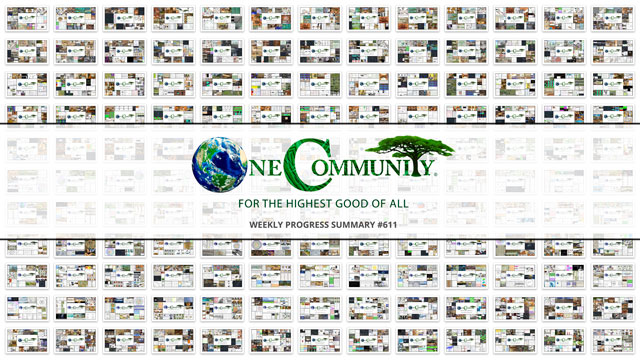
OUR MAIN OPEN SOURCE HUBS
Click on each icon to be taken to the corresponding Highest Good hub page.
One Community’s physical location will forward this movement as the first of many self-replicating teacher/demonstration communities, villages, and cities to be built around the world. This is the December 2, 2024 edition (#611) of our weekly progress update detailing our team’s development and accomplishments:
Maximizing Eco-potential
One Community Progress Update #611
DONATE | COLLABORATE | HELP WITH LARGE-SCALE FUNDING
CLICK HERE IF YOU’D LIKE TO RECEIVE AN EMAIL EACH WEEK WHEN WE RELEASE A NEW UPDATE
YOU CAN ALSO JOIN US THROUGH SOCIAL MEDIA
ONE COMMUNITY WEEKLY UPDATE DETAILS
HIGHEST GOOD HOUSING PROGRESS
 One Community is maximizing eco-potential through Highest Good housing that is artistic and beautiful, more affordable, more space efficient, lasts longer, DIY buildable, and constructed with healthy and sustainable materials:
One Community is maximizing eco-potential through Highest Good housing that is artistic and beautiful, more affordable, more space efficient, lasts longer, DIY buildable, and constructed with healthy and sustainable materials:
- Learn about maximizing eco-potential: Our Upcoming Crowdfunding Campaign
- Learn about the different village models: 7 Sustainable Village Models
- Visit the open source portals for the first two: Earthbag Village OS Hub | Straw Bale Village OS Hub
This week, Adefola (Fola) Madehin (Electrical Design Specialist) continued his work with Earthbag Village electrical designs. Fola completed the lighting circuit and cable wiring for the ground floor of the Earthbag 4 Dome Village project. Switches were positioned and connected to the wiring for the lighting fixtures, aligning with the electrical design. The lettering for the electrical circuit was finalized for use in the schematic diagram for the distribution board design. The Earthbag Village is the first of 7 to be built as the housing component of One Community’s open source model for maximizing eco-potential. See some of his work in the collage below.
Adil Zulfiquar (Engineer) continued working on the Vermiculture Toilet engineering designs. His work centered on updating the Safety Guidelines for Operating Electric Utility Vehicles (EUVs) and Utility Trailers. A new section was added to the EUV guidelines to address critical operational challenges, including detailed instructions with visuals to support safe practices. The Utility Trailer guidelines were updated with new illustrations and sketches emphasizing safety concerns like load distribution and stability controls. The Earthbag Village is the first of 7 to be built as the housing component of One Community’s open source model for maximizing eco-potential. See below for some of the pictures related to work.
Charles Gooley (Web Designer) continued working on the Aircrete Engineering and Research: Compression Testing, Mix Ratios, R-value, and More page. Charles worked on refining the Open Source DIY Earth Dam Design & Construction for Water Retention, Pond & Lake Creation tutorial important in maximizing eco-potential. The updates included correcting typographical and grammatical errors and adding new sections to improve the tutorial’s content. The document provides guidance on constructing small to medium-scale earth dams for uses such as irrigation, aquaculture, recreation, and ecosystem restoration. Aircrete is an alternative we’re exploring for the Earthbag Village, a foundational part of One Community’s open-source model for maximizing eco-potential. Take a look at some of the work in the images below.
Karthik Pillai (Mechanical Engineer) continued helping finish the Vermiculture Toilet engineering and helping with the Earthbag Village 4-dome home roof plan. Karthik focused on the cluster roof project, identifying suitable beam dimensions to maintain deflection under one inch and discussing with Michaela the possibility of using a larger beam to support the central section of the roof structure. Progress was also made on the vermiculture project, with the final design completed and plans to review it with Jae for potential modifications or enhancements. The Earthbag Village is the first of 7 to be built as the housing component of One Community’s open source model for maximizing eco-potential. See the work in the collage below.
Manjiri Patil (Mechanical Design Engineer) started helping with the engineering details for the Ultimate Classroom part of the Highest Good Education component. Manjiri reviewed the wind load calculations, providing feedback on the methodology and results while verifying the accuracy of equations and ensuring compliance with ASCE 7-16 standards and California codes. She assessed the report’s structure and clarity, recommending improvements such as incorporating diagrams and simplifying complex sections to enhance its visual presentation and readability. The One Community model of combining forward-thinking education with sustainably built classrooms like this is an excellent example of maximizing eco-potential. This approach exemplifies maximizing eco-potential by creating environments fostering collaboration and innovation. See the collage below for his work.
Michaela Silva (Architect) continued working on the interior details for the Earthbag Village 4-dome home design. Michaela facilitated an MEP coordination meeting and updated the primary bedroom layout in the Revit model, incorporating necessary drawing adjustments based on the changes. She also began developing a detailed 3D model representing each earthbag layer and the main structural roof, which will serve as the basis for analyzing the structural frame of the roof. The Earthbag Village is the first of 7 villages to be built as part of One Community’s open source model for maximizing eco-potential. See her work in the collage below.
DUPLICABLE CITY CENTER PROGRESS
 One Community is maximizing eco-potential through a Duplicable and Sustainable City Center that is LEED Platinum certified/Sustainable, can feed 200 people at a time, provide laundry for over 300 people, is beautiful, spacious, and saves resources, money, and space:
One Community is maximizing eco-potential through a Duplicable and Sustainable City Center that is LEED Platinum certified/Sustainable, can feed 200 people at a time, provide laundry for over 300 people, is beautiful, spacious, and saves resources, money, and space:
- Learn about this building and it’s function: Duplicable City Center Open Source Hub
This week, Arnob Mutsuddi (Mechanical Engineer) continued working on the Duplicable City Center structural engineering model and details. He worked on the design for the row 6-1 hub connector was completed, and two additional variants of the connector for row 6 were identified, initiating work on the row 6-2 hub connector. Progress continued on the row 6-2 hub connector, with the middle ring and five side struts designed. Work began on aligning the side struts with the middle ring while adhering to GD&T requirements, and the alignment of three side struts was completed. The Duplicable City Center is a foundational part of One Community’s open-source model, which excels in the mission of maximizing eco-potential. This approach is integral to their mission of maximizing eco-potential through innovative and scalable solutions. See some of this work in the pictures below.
Chris Blair (GIS Technician/Horticulturist) continued working with GIS data as part of One Community’s Permaculture Design that includes the location of the Duplicable City Center. He worked with GIS data as part of One Community’s Permaculture Design critical in maximizing eco-potential. Using scaled footprints of the villages and city center, he analyzed and placed them in locations on the property based on slope and solar aspects. Chris completed maps showing the original village locations and proposed relocation suggestions and integrated these maps into a Google document, adding text and shapes for additional context. Within One Community’s open-source framework, the Duplicable City Center plays a central role in maximizing eco-potential. The images below showcase some of this work.
Faeq Abu Alia (Architectural Engineer) continued his work on the Duplicable City Center kitchen. He focused on refining the Duplicable City Center kitchen model in SketchUp, resolving design issues, and incorporating feedback to enhance its quality. He added human figures to provide a realistic scale and perspective. Giving life to designs makes maximizing eco-potential real and achievable. In Lumion, he fine-tuned materials, added more human figures, and created three walkthrough paths showcasing the kitchen. Additionally, Faeq started rendering the walkthrough video, a process expected to take over 200 hours, to ensure a high-quality visual presentation that aligns with project standards. The Duplicable City Center represents a fundamental element of One Community’s open-source approach, dedicated to the mission of maximizing eco-potential. View examples of this work in the pictures provided below.
Mohammed Maaz Siddiqui (Mazz) (Architect) continued working on the outdoor landscape areas for the Duplicable City Center project. He worked on enhancing the front landscape area of the Duplicable City Center by updating the design file to include additional plants and trees, improving the scene’s visual coherence. The incorporation of natural vegetation in designs like a pointer to maximizing eco-potential. He replaced trees that were unsuitable for the overall landscape and California’s climate and modified the soil to natural grass instead of mowed carpet grass. Additional details were incorporated into the design to enrich the overall appearance. Maaz also organized the layout for a test walkthrough, optimizing camera angles to effectively showcase the landscape, and concluded by rendering the video to produce the final output. Within One Community’s open-source framework, the Duplicable City Center plays a central role in the mission of maximizing eco-potential. The images below showcase some of this work.
Nimika Devi (Architect) continued her contributions to the landscape design and development of the Duplicable City Center‘s urban farm. Plants were reorganized and replaced based on the approved site plan to align with the project’s vision of maximizing eco-potential. Edible flowers, fruit-bearing trees, and a broader variety of vegetable plants were introduced to enhance the farm’s utility and aesthetic appeal. Due to limitations in the software library, chickens and hens were substituted with alternative bird species to simulate the intended visual and functional elements of the design while addressing resource constraints. Within One Community’s open-source framework, the Duplicable City Center plays a central role in the mission of maximizing eco-potential. The images below showcase some of this work.
Nika Gavran (Industrial Designer) continued with her work on the Duplicable City Center dormer window installation plans. She focused on expanding the final document for the dormer window instructions, continuing to implement changes based on feedback. Maximizing eco-potential is achievable based on either positive or negative feedback. One key update involved adjusting the roof of the dormer to have a greater slope, which required setting up and completing new renders reflecting this modification. She prepared these renders for integration into the presentation’s graphic layout. Additionally, she began a new page providing a more detailed description of how to cut the rock wool insulation. As a foundational component of One Community’s open-source strategy, the Duplicable City Center is designed with the mission of maximizing eco-potential. The images below showcase some of this work.
Rudrani Sravya Mukkamala (Mechanical Engineer) continued researching the structural components of a hydraulic elevator, focusing on the framework, guide rails, and load-bearing elements. Researching on different components and cases makes maximizing eco-potential vision attainable. She focused on the design of the guide rails and elevator car subassemblies for their DIY hydraulic elevator project. Sravya analyzed key design aspects of the guide rails and elevator car subassemblies, considering factors critical to their functionality and integration. A detailed design plan was created to outline the process, ensuring that insights gained from designing the guide rails and elevator car would inform the development of subsequent subassemblies. This step-by-step approach aims to streamline the overall design and facilitate iterative improvements. Within One Community’s open-source framework, the Duplicable City Center plays a central role in the mission of maximizing eco-potential. The images below showcase some of this work.
Tasmia Hasan (Design Engineer) continued with her work on the structural engineering of the Duplicable City Center. She worked on the ring formation of the design, focusing on adjusting the angles of the hub connectors to improve alignment. She also began laying out the second row of the structure, ensuring consistency with the initial design specifications. Additional efforts included refining the connection points to enhance structural stability and preparing for the integration of subsequent rows. As a foundational component of One Community’s open-source strategy, the Duplicable City Center is designed for the mission of maximizing eco-potential. You can see examples of this work in the following images.
Umema Ali (Mechanical Design Engineer) continued working on the Duplicable City Center Engineering. She worked on the static structural analysis of a new dome structure, focusing on snow loads of 20 and 30 pounds. Using Inventor, she evaluated the displacement and stress values caused by a uniformly distributed load across the structure. The analysis aimed to assess the structural integrity of the dome under varying snow load conditions and identify any potential areas of concern. Within One Community’s open-source framework, the Duplicable City Center plays a central role in the mission of maximizing eco-potential. The images below showcase some of this work.
HIGHEST GOOD FOOD PROGRESS
 One Community is maximizing eco-potential through Highest Good food that is more diverse, more nutritious, locally grown and sustainable, and part of our open source botanical garden model to support and share bio-diversity:
One Community is maximizing eco-potential through Highest Good food that is more diverse, more nutritious, locally grown and sustainable, and part of our open source botanical garden model to support and share bio-diversity:
- Learn about the structures maximizing eco-potential: Hoop House Hub | Aquapini & Walipini Open Source Hub
- See what we’ll be growing: Gardens & Hoop Houses | Large-scale Structures | Food Forest | TA
This week, the core team continued the review of the Apiary and portions of the Earthbag Tools, Equipment, and Material/Supplies lists. They also reviewed the electrical plan for the Earthbag Village, examining individual circuits and suggesting uniform wire gauges and appropriate breaker amperes. An electrical reassessment will be performed for the 4-dome cluster, and the bathroom layout was also addressed by suggesting an alternative location and outlining the rationale for the proposed change, outlined as part of One Community’s open source model for maximizing eco-potential. See below for some of the pictures related to this work.
And the core team continued their work on the Chicken Coop Step-by-Step building instructions document, updating images for specific walls on various pages. We continue to focus on maximizing eco-potential that works for everyone through iterative improvements and user-centric solutions. See the Highest Good Society and Highest Good Network pages for more on how this relates to maximizing eco-potential. The collage below shows some of their work.
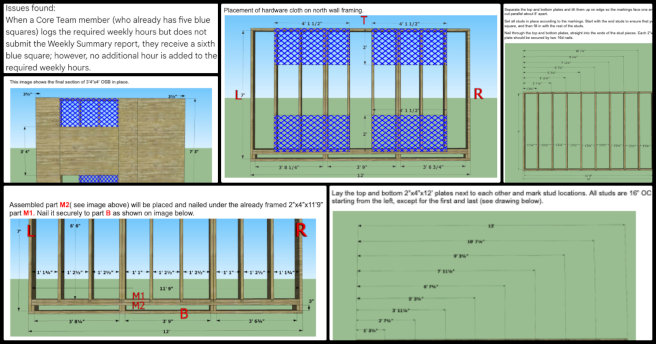
Jay Nair (BIM Designer) continued working on Aquapini and Walipini Planting and Harvesting lighting and HVAC design. He focused on advancing the greenhouse design by resolving challenges encountered during the heat load analysis in Revit and addressing software limitations and errors. Addressing the challenges is important in maximizing eco-potential. Research into alternative methods for performing the analysis was undertaken to achieve accurate results aligned with the greenhouse’s requirements. A work breakdown structure (WBS) was developed for HVAC and plumbing designs to facilitate task assignments and project planning. The Highest Good Food initiative is a key component of One Community’s open source plans, focused on maximizing eco-potential, and exemplifies the organization’s commitment through innovative design and implementation. Below are some of the images showcasing this work.
Silin Wang (Landscape Designer) continued rendering work for Aquapini and Walipini Planting and Harvesting #2: Tropical Moist House. She searched for edible aquatic plant models that were not available in the Lumion asset library and created custom models to supplement them. Silin then arranged these accurate, high-quality plant models within the planting beds in the aquatic zones on both sides. While preparing the rendering documentation for the Highest Good Food initiative, focused on maximizing eco-potential, she identified discrepancies between some models and the CAD drawings, along with design flaws that could hinder circulation within the space, prompting her to propose potential optimization suggestions. Her work is showcased in the collage below.
Syahrina Maulida Majid (Nutritionist) continued working on creating menu implementation tutorials as a part of One Community’s Transition Food Self-Sufficiency Plan. She worked on menu implementation by refining and testing the master recipe template, and important in maximizing eco-potential. She developed step-by-step instructions for a tutorial to guide users on data input, adapting the template to different dietary needs, and interpreting its outputs. Observations from earlier testing were integrated to address potential challenges and enhance the tutorial’s clarity. Additionally, she documented examples to provide practical context, ensuring the tutorial is accessible and applicable to a variety of users. The Highest Good Food initiative plays a crucial role in One Community’s open source plans to maximizing eco-potential. Her work is showcased in the collage below.
Vatsal Tapiawala (Mechanical Engineer) continued working on integrating ideas from Paul Wheaton’s “Truly Passive Greenhouse” designs into the Aquapini/Walipinis structures. The incorporation of Aquapini is essential to maximizing eco-potential. He focused on analyzing the heating and cooling loads for Walipini 1. He performed a comparative study of the peak loads under various scenarios to understand the thermal performance of the structure. In addition to the analysis, Vatsal initiated sketches for the next phase, focusing on the “Earth on Roof” design. The Highest Good Food Initiative is a key component of One Community’s open source plans, focused on maximizing eco-potential. See his work in the collage below.
Ziyi Chen (Landscape Designer) continued working on the design of the outdoor spaces for the Aquapini/Walipinis structures. She completed most of the layout for the fruit tree area and the corner rest area. In the fruit tree area, she used a variety of fruit trees for the canopy layer, while different types of berries, including raspberries and blueberries, were planted in the lower layer to improve both food and aesthetic appeal. The planting design also included wider spacing between the plants to allow easier access and harvesting. In the rest area, low-growing berries were placed between the plants and architectural structures. The Highest Good Food initiative is a key component of One Community’s open source plans, focused on maximizing eco-potential. See her work in the collage below.
HIGHEST GOOD ENERGY PROGRESS
 One Community is maximizing eco-potential through Highest Good energy that is more sustainable, resilient, supports self-sufficiency and includes solar, wind, hydro and more:
One Community is maximizing eco-potential through Highest Good energy that is more sustainable, resilient, supports self-sufficiency and includes solar, wind, hydro and more:
- Learn about the open source sustainable-energy foundations: Solar, Hydro, and Wind
- Explore our research into the most sustainable products and companies for saving water and energy: Insulation, Eco-laundry, Lightbulbs and Light Bulb Companies, Doors and Door Companies, Windows and Window Companies, Toilets, Faucets and Faucet Accessories, Urinals, and more. The resource conservation employed here is maximizing eco-potential.
This week, Muhammad Sarmad Tariq (Electrical Engineer) continued helping finish the Highest Good energy component and evaluating grid-tie vs off-grid solar design. Sarmad reviewed literature and publications within the IEEE spectrum related to economic comparisons of grid-tie versus off-grid solar PV systems. He focused on several Net Present Cost evaluations from past studies. Maximizing eco-potential must therefore be sensitive to the cost and other resource required. One publication compared off-grid and on-grid PV systems for a 1000 Wp residential system, and Sarmad analyzed the methodology used in this study. Based on this analysis, he determined that a grid-connected PV system costs 1,244 IDR/kWh, while an off-grid PV system costs 4,644 IDR/kWh, indicating that off-grid systems are more expensive. The methodology and results are summarized in the document titled: Sarmad and One Community Collaboration & WBS Complete Grid-tie vs Off-grid Cost Analysis and Rollout Report. Further studies on additional methodologies will continue in the coming weeks. The team has made good progress within One Community’s open-source framework, with the Duplicable City Center plays a central role in maximizing eco-potential. Take a look at some of this work in the images below.
Vatsal Hitendra Shah (Volunteer Engineering Project Manager) reviewed the One Community Highest Good energy initiative and gained an understanding of its phases, particularly focusing on cost analysis for power generation equipment like diesel generators and solar systems. He met with Rachan to learn about creating cost analysis sheets and expectations for detailing equipment specifications. Additionally, he explored the Highest Good Network (HGN) Phase 2 User’s Manual, brainstorming strategies for its development. Vatsal also completed onboarding tasks to access and familiarize himself with the necessary tools for contributing to the manual project, which is dedicated in maximizing eco-potential. See below for the work done.
Yi-Ju Lien (Environmental Engineer) continued with her work on the Highest Good energy LEED points related to stormwater retention. This week, Yi-Ju worked on a LEED tutorial for Earthbag Village, focusing on stormwater management; since maximizing eco-potential mechanisms must address environmental and climatic challenges with the surrounding. She outlined design strategies to address runoff and improve water retention, including pervious pavement, green roofs, and bioretention systems. Additionally, she created a step-by-step guide for calculating the 90th percentile rainfall event and runoff volume using the Direct Determination method, taking into account soil type and site conditions. The document concludes with an assessment of the Earthbag Village’s performance in relation to LEED certification requirements. The Duplicable City Center represents a fundamental element of One Community’s open-source approach, which is dedicated for maximizing eco-potential. Below is a collage of this work.
HIGHEST GOOD EDUCATION PROGRESS
 One Community is maximizing eco-potential through Highest Good education that is for all ages, applicable in any environment, adaptable to individual needs, far exceeds traditional education standards, and more fun for both the teachers and the students. This component of One Community is about 95% complete with only the Open Source School Licensing and Ultimate Classroom construction and assembly details remaining to be finished. With over 8 years of work invested in the process, the sections below are all complete until we move onto the property and continue the development and open sourcing process with teachers and students – a development process that is built directly into the structure of the education program and everything else we’re creating too:
One Community is maximizing eco-potential through Highest Good education that is for all ages, applicable in any environment, adaptable to individual needs, far exceeds traditional education standards, and more fun for both the teachers and the students. This component of One Community is about 95% complete with only the Open Source School Licensing and Ultimate Classroom construction and assembly details remaining to be finished. With over 8 years of work invested in the process, the sections below are all complete until we move onto the property and continue the development and open sourcing process with teachers and students – a development process that is built directly into the structure of the education program and everything else we’re creating too:
- Program Overview: Education Open Source Hub
- How the components work together in designing human orchestrated eco-abundance: How to use the Education for Life Program
- Lesson Plans for Life – Lesson Plans How-to
- Foundations of Outstanding Leaders, Teachers, and Communicators
- Curriculum for Life
- Teaching Strategies for Life
- Learning Tools and Toys for Life
- Evaluation and Evolution
This week, Apoorv Pandey (Mechanical Engineer) continued helping with the engineering details for the Ultimate Classroom part of the Highest Good Education component. He continued working on the final draft of the Structural Engineering Report for the Ultimate Classroom Project, incorporating the changes recommended by Jae. He focused on reformatting the title block for the AutoCAD files and improving text visibility in the drawings within the software. Apoorv is nearly finished with the report’s engineering calculations and analysis section and has worked on reformatting certain tables to present data more effectively. The One Community model of combining forward-thinking education with sustainably built classrooms like this is an excellent example of maximizing eco-potential. This approach exemplifies maximizing eco-potential by creating environments fostering collaboration and innovation. See the collage below for his work.
HIGHEST GOOD SOCIETY PROGRESS
 One Community is maximizing eco-potential through a Highest Good society approach to living that is founded on fulfilled living, the study of meeting human needs, Community, and making a difference in the world:
One Community is maximizing eco-potential through a Highest Good society approach to living that is founded on fulfilled living, the study of meeting human needs, Community, and making a difference in the world:
- Read the Highest Good society overview: Highest Good Society
- Learn about the model for fulfilled living and sharing: A Day in the Life
- Learn about the 4 economic models: RBE | For-profit | Non-profit | Entrepreneurship
- Learn about our open source community collaboration and management software: The Highest Good Network
This week, the core team completed over 36 hours managing One Community’s volunteer-work review not included above, emails, social media accounts, web development, new bug identification and bug-fix integration for the Highest Good Network software, and interviewing and getting set up new volunteer team members. They also shot and incorporated the video above that talks about maximizing eco-potential and how maximizing eco-potential is a foundation of the bigger picture of everything One Community is doing. The image below shows some of this work.
Anoushka Hazari (Data Analyst) continued working on code to automate and simplify the Highest Good Network software promotion process. She focused on enhancing code functionality by adding filters to extend communication capabilities beyond Slack messages, allowing options for emails and text messages. This development involved referencing research on automated mailing systems and troubleshooting integration challenges using VSC. Additional efforts were directed toward PR review management, including reviewing team pull requests, updating the PR review table, and improving documentation accuracy. Work also included addressing existing errors in the code, exploring API integration strategies to streamline processes, and allocating time to overcome technical distractions. Tasks completed encompassed blog creation, collage design, and updating the HGN spreadsheet to maintain organized team workflows. This work helps One Community’s mission of maximizing eco-potential and reinforces our commitment to maximizing eco-potential. The following images show her work for the week.
Chitra Siddharthan (Data Analyst And Team Administrator) continued her training for the Admin role, with her work evaluated by Jibin, Rishab, and Vishnu, who provided feedback on the training document. She incorporated their suggestions and made revisions accordingly. Following this, she was assigned to a team within the Highest Good Network and tasked with overseeing the completion of Phase 2 of the HGN Construction Management Software. Chitra also reviewed and familiarized herself with the “Congratulations, you’re an admin now!” document and began reading the “HGN Phase II: Materials, Equipment, Tools and Project Tracking System Outline – Team Collaboration” document. This work helps One Community’s mission of maximizing eco-potential and reinforces our commitment to maximizing eco-potential. The following images show his work for the week.
Feras Rehman (Data Analyst) continued working on developing One Community’s Mastodon account and strategy. He also managed his part of the One Community Updates Blog by reviewing and adding images to supplement the summary. He reviewed Sneka, Ratna, Rahul, and Praneeth’s blogs and provided feedback on identified errors. Images were added to enhance the weekly summary, and six additional Mastodon posts were scheduled on Buffer for the following week. Targeted strategies for Mastodon were developed, leading to a threefold increase in post reach through optimized hashtag usage and improved post structuring. This work helps One Community’s mission of maximizing eco-potential and reinforces our commitment to maximizing eco-potential. The following images show his work for the week.
Hritvik Mahajan (Data Analyst) continued focusing on Figma development, marketing, and administrative tasks. He developed a new strategy for posting images to Twitter communities to increase impressions and attract followers. He continued designing the social media scheduler in Figma, focusing on updates and improvements. For the HGN Phase 1 frontend software testing, he reviewed various pull requests, addressed merge conflicts, and followed up with team members on Slack for necessary changes. Additionally, he posted content with relevant hashtags to Twitter communities and provided feedback on multiple admin team members for Blog #610 in the Step 4 document. He also managed tags on GitHub, commented on the Phase 1 bug document, and collaborated with team members to ensure project progress. This work helps One Community’s mission of maximizing eco-potential and reinforces our commitment to maximizing eco-potential. The following images show his work for the week.
Praneeth Kruthiventi (Volunteer Data Analyst) continued helping manage the One Community Google Ads campaigns. He increased the budget for all active Google Ads campaigns, leveraging a promotion from Google. He focused on optimizing these campaigns by updating keywords to improve relevance and analyzed the impact of bidding strategy adjustments on ad visibility. He also explored methods for generating automated reports to monitor campaign performance. Additionally, Praneeth reviewed training exercises completed by new volunteers and contributed to the hiring process for future roles. This work helps One Community’s mission of maximizing eco-potential and reinforces our commitment to maximizing eco-potential. The following images show his work for the week.
Shireen Kayal (Humanitarian Program Developer & Data Manager) continued her work on branding graphics for all of One Community. This week she created new graphics for both the Highest Good energy page and the For The Highest Good of All® philosophy page by creating clearer visual representations of key concepts. She updated three images associated with Highest Good energy. She began creating new graphics for Conflict Resolution and made additional modifications to the existing images. In addition, Shireen worked on illustrations intended for the latest graphics focused on Conflict Resolution, enhancing the overall visual representation of the concepts. This work helps One Community’s mission of maximizing eco-potential and reinforces our commitment to maximizing eco-potential. The following images show her work for the week.
Vatsal Mendpara (Security Analyst) reviewed the plugins list to verify their usage and identify unnecessary plugins for removal. He collaborated on optimizing WordPress settings through a detailed performance analysis to implement improvements, including removing Nitropack, integrating a new cache plugin, performing ping tests before and after updates, reviewing resources, cleaning up unused optimization plugins, and preparing documentation for a refund request. Additionally, he researched alternative website plugins, performed website maintenance, and monitored system and server logs to ensure security. Vatsal also completed a report on plugin findings and proceeded with the recommended changes. This work helps One Community’s mission of maximizing eco-potential and reinforces our commitment to maximizing eco-potential. The following images show his work for the week.
Yash Shah (Data Analyst and Team Administrator) continued his admin work and managed the social architecture component of the Highest Good Network software. He created a blog for Dev Dynasty, organized the folder structure for the week, and designed a collage. The weekly summary was edited to include contributions from all team members. Participation in the Phase 3 meeting involved discussing progress and tasks, as well as explaining specific assignments and workflows to new team members using Figma and document modification tools. Additional gaps in documentation were identified, and missing elements were added to ensure clarity and completeness. These tasks collectively focused on enhancing team coordination and maintaining organized project documentation. This work helps One Community’s mission of maximizing eco-potential and reinforces our commitment to maximizing eco-potential. The following images show his work for the week.
ADMINISTRATION TEAM A-O
The Administration Team’s summary, covering their work administrating and managing most of One Community’s program for maximizing eco-potential was managed by Muhammad Huzaifah (Administrative Assistant) and includes, Durgeshwari Naikwade (Data Analyst), Jessica Fairbanks (Administrative Assistant), Michael Juma (Administrative Assistant), Kishan Sivakumar (Administrative Assistant and Software Team Manager), Jibin Joby (Data Analyst), Vishnu Murali (Data Analyst), Wasim Akram (Administrative Assistant) and Olawunmi “Ola” Ijisesan (Administrative and Management Support). This week, Durgeshwari created comprehensive documentation for integrating Rank Math with Google Accounts, including instructions for connecting Google Analytics and Google Search Console, managing permissions, and optimizing integration. She also updated the progress tracking spreadsheet and analyzed previous post metrics to assess their utility.
Jessica edited her project on integrating Highest Good Food into small-scale organizations, reorganizing content into bullet points for improved clarity, and met with Syahrina to discuss next steps for the Menu Implementation Tutorials. And ensuring clarity of every component is the road to maximizing eco-potential. She also completed administrative tasks, including creating a collage and reviewing updates from other volunteers. Jibin reviewed his team’s work, created collages, updated assigned blogs by improving keyword density and SEO scores, and shared finalized PDFs. He also researched Rank Math Analytics and its integration with Google Analytics and Google Search Console. Kishan focused on senior administrative tasks, reviewed volunteer documents, tracked progress, addressed comments, edited assigned SEO pages, revisited optimized pages based on feedback, and completed a weekly blog.
Michael managed the Energy team, updated summary reports, improved the keyword density of blog #610 to achieve an SEO score of 87%, and addressed administrative feedback and communication challenges. Huzaifah conducted blog audits, followed up on team bios, managed team deadlines by coordinating volunteer updates, and wrote his bio for publication. Ola supported the manager by supervising tasks, monitoring PR review team progress, providing feedback, and updating weekly folders for the admin team. Constant monitoring and analysing reviews on ec0-programs is one way of maximizing eco-potential.
Vishnu reviewed team work, provided onboarding feedback, updated pages and blogs to improve SEO, finalized PDFs, researched dashboard layouts, and attended a Google Analytics meeting to enhance reporting and project performance. Wasim completed administrative tasks for the Highest Good energy team, uploaded summaries and collages to WordPress, participated in a career-focused meeting with Jae, and began assisting the Google Analytics team by familiarizing himself with workflows, tools, and optimization processes. One Community’s model for maximizing eco-potential includes developing and maintaining a supportive administration team like this. You can see the work for the team in the image below.
ADMINISTRATION TEAM R-Z
The Administration Team’s summary, covering their work administrating and managing most of One Community’s ongoing process for maximizing eco-potential was managed by Sneka Vetriappan (Data Analyst) and includes Ratna Meena Shivakumar (Data Analyst and Admin), Rishabh Rao (Administrator), Saumit Chinchkhandi (Administrative Assistant and Software Engineer), Shrinivas Patil (Software Engineer) and Zuqi Li (Administrative Assistant and Economic Analyst). This week, Ratna prepared the weekly summary and created engaging collages for blog posts featuring members from the Education, Core Team, and Highest Good Society groups. She also scheduled posts for One Community’s Facebook and Instagram pages and initiated work on the AI music task in Suno AI.
Rishabh completed administrative tasks for Team Skye by uploading their team summary and collage to WordPress and addressing feedback corrections. Reacting to feedbacks on the eco-initiatives you are implementing is important in maximizing eco-potential. He created a Facebook post for the Sustainable Lives page, exported insights data into a .csv file for analysis, familiarized himself with RankMath for SEO optimization, and sought editing rights to enhance previous blogs. Saumit managed the pull request workflow for volunteers with first names between L and Sg, reviewed submissions, provided feedback, and verified necessary changes. He updated his WordPress page, handled questions from Wasim and Tanmay, and coordinated three hiring interviews for admin and software team roles. He also completed frontend testing for multiple pull requests, communicated with developers about merge conflicts and approvals, and documented hiring details. Shrinivas finalized blogs 610 for both Team Moonfall and Team Reactonauts, providing feedback to team members. He managed 28 individuals across two teams, reviewed admin feedback spreadsheets, and tested multiple pull requests in the development environment for admin, owner, and volunteer accounts.
Sneka provided detailed feedback on teammates’ contributions to the weekly blog, identified and corrected errors, and followed up on team comments to ensure alignment with project goals. She reviewed the final blog review document, maintained the associated review table, and uploaded weekly summaries and collages to the webpage, refining outputs based on reviews. Zuqi organized the weekly summary for the Graphic Design Team and supported other admins by reviewing their summaries. She explored collaborative documents for Google AdWords and Google Analytics, researched blog performance metrics, and developed strategies to improve SEO outcomes. One Community’s model for maximizing eco-potential includes developing and maintaining a supportive administration team like this. You can see the work for the team in the image below.
GRAPHIC DESIGN TEAM
The Graphic Design Team’s summary was managed by Zuqi Li (Administrative Assistant and Economic Analyst) and included Anusha Tariq (Graphic Designer), Aurora Juang (Graphic Designer), Junyuan Liu (Graphic Designer, UI/UX Designer), and Jaime Yao (Creative Technologist), covering their work on graphic designs for maximizing eco-potential. This week, Anusha focused on creating and refining an announcement post, implementing required changes, performing color corrections, and integrating a nature background for better visual alignment. The post was optimized for SEO before being uploaded to the website. Additionally, she created AI-generated images to complement text for a social media post and edited two distinct social media posts in Photoshop, experimenting with shadow techniques to enhance their aesthetic appeal. All finalized materials were organized and uploaded to Dropbox for accessibility.
Aurora completed bio announcements for volunteers who required additional imagery, sourcing images as per Jae’s instructions and finalizing all previously assigned bios. She also updated and revised designs for social media campaigns and refined the final version of the brand book. Jaime completed web pages for Adil, Vimarsh, Yash, Strallia, and Praneeth and worked on social media visuals based on four selected concepts: “Planting Tomorrow” and “Healing the Earth,” focusing on reforestation and ecosystem restoration, and “Living Skyscraper” and “Community Green Wall,” which emphasized urban sustainability and community collaboration for maximizing eco-potential. These projects aimed to highlight actionable solutions for climate change and sustainability. Junyuan created three new social media images through an iterative design process, collected images, and explored design options for upcoming projects while brainstorming future image concepts. See the Highest Good Society pages for more on how this contributes to maximizing eco-potential. See the collage below to view some of their work.
HIGHEST GOOD NETWORK PROGRESS
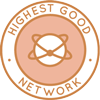 One Community is maximizing eco-potential through open source Highest Good Network® software that is a web-based application for collaboration, time tracking, and objective data collection. The purpose of the Highest Good Network is to provide software for internal operations and external cooperation. It is being designed for global use in support of the different countries and communities replicating the One Community sustainable village models and related components.
One Community is maximizing eco-potential through open source Highest Good Network® software that is a web-based application for collaboration, time tracking, and objective data collection. The purpose of the Highest Good Network is to provide software for internal operations and external cooperation. It is being designed for global use in support of the different countries and communities replicating the One Community sustainable village models and related components.
- Learn about our open source community collaboration and management software: The Highest Good Network
ALPHA SOFTWARE DEVELOPMENT TEAM
The Alpha Team’s summary, covering their work on the Highest Good Network software software was managed by Lin Khant Htel (Frontend Software Developer) and includes Rupa Rajesh Bhatia (Software Engineer), and Sheetal Mangate (Software Engineer). The Highest Good Network software is how we will manage and measure our processes for maximizing eco-potential across our social architecture, construction, production, and maintenance processes. This week, Lin reviewed and approved PR #2903, gaining further familiarity with the codebase and testing the changes locally, with all seven test cases passing. Lin also reviewed weekly summaries, photos, and videos submitted by Alpha team members and assigned new tasks to some team members based on project needs and priorities. Sheetal focused on exploring functionality of teamMembershipReducer. To gain a deeper understanding of how the teamMembershipReducer.js file works, Sheetal thoroughly reviewed the existing code and how payload carries data associated with action, which will assist in writing the necessary test cases, edge cases and positive and negative scenarios.
Rupa worked on the styling of Pages 1, 2, and 3, as well as the React code for Page 7 of the multi-step form project. For Pages 1, 2, and 3, Rupa focused on designing the layout and implementing custom CSS to ensure a consistent and user-friendly interface. The pages were structured to collect user input through various form elements like range sliders, checkboxes, and dropdown menus, with state management handled by React-controlled components. On Page 7, Rupa worked on the React functionality, implementing radio buttons for dispute resolution and agreement terms, as well as a text input for the digital signature. The page was designed to maintain consistency with previous pages, and the React Router was used to navigate between them. Additionally, Rupa reviewed Sheetal’s summary and evaluated Lin’s summary for insights and learning. See the Highest Good Society and Highest Good Network pages for more on how this relates to maximizing eco-potential. View some of the team’s work in the collage below.
BINARY BRIGADE SOFTWARE DEVELOPMENT TEAM
The Binary Brigade Team’s summary overseeing advancements in the Highest Good Network software was managed by Vijay Anand Pandian (Full Stack Software Engineer) and includes Aaryaneil Nimbalkar (Software Developer), Ashish Nagaraju (Software Engineer), Deepthi Kannan (Software Engineer), Geeta Matkar (Software Engineer), Huijie Liu (Software Engineer), Sandhya Adavikolanu (Software Developer), Sriram Seelamneni (Software Engineer) and Xiaolu Li (Software Engineer). The Highest Good Network software is how we’ll be managing and objectively measuring our process for maximizing eco-potential through our social architecture, construction, production, and maintenance processes. This week, Aaryaneil developed unit tests for several components, including teamByIdReducer.js, timeEntriesForSpecifiedPeriodReducer.js, totalOrgSummaryReducer, timeOffRequestReducer, and projectByIdReducer. The tests covered scenarios such as handling initial state, processing specific actions like GET_TEAM_BY_ID and GET_PROJECT_BY_ID, updating state with valid actions, and retaining current state for unmatched actions. He also submitted a pull request for updates to the popupEditorReducer and other unit tests.
Ashish worked on issue 37 in the Project/Teams/Tasks/WBS component, addressing a problem that allowed assigning an end date earlier than the start date. During the process, he identified an additional issue where assigned dates were displayed one day earlier due to timezone handling. He debugged the issue and continued resolving the original problem. Deepthi worked on resolving conflicts in existing pull requests to prepare them for merging. This included analyzing issues with the base branch, updating code based on recent reviews, testing functionality, and coordinating with reviewers to implement feedback and facilitate approvals. Detailed analysis of activities can also ensure maximizing eco-potential. Geeta began work on the Listing and Bidding Platform task by cloning the necessary repositories to her local machine. She encountered errors while running the code, which required troubleshooting. She focused on identifying and resolving these issues before proceeding with the development of the required components for the platform.
Huijie has wrapped up her work. She combined two charts into one PR, solved errors due to recent backend updates and made the PR ready to merge. Huijie also submitted the frontend and backend PR for application page category search dropdown menu. She has also solved merge conflicts for the bell notification PR and tested it. Finally, she added known bug of jobTitle missing problem in bug list documentation. Sandhya resolved a critical issue during the implementation of the TaskCompletedBarChart component for the Total Org Summary page. The problem was related to volunteer statistics data failing to load due to a missing authentication token in the front-end API request. She verified the front-end API call structure and identified the absence of authorization headers as the root cause. Collaborating with the backend team, Sandhya ensured the backend adjustments were made and updated the front-end code to include the required headers. After extensive testing, she finalized a pull request with detailed documentation and prepared for the code review process. Maximizing eco-potential of any eco-program is also much dependent on detailed documentation.
Sriram worked on unit tests for a previously incomplete task from an older pull request, starting by resolving issues and merge conflicts. He completed the first unit test and began implementing the remaining two tests, ensuring they aligned with project requirements and functionality expectations. Vijay focused on implementing and completing unit tests for key reducer files in the HGN software project. He finalized the unit testing for the notificationReducer file (PR #2903) after beginning work on it earlier in the week. He also worked on and completed the unit test implementation for the projectMembershipReducer file (PR #2909). These efforts contributed to improving test coverage and code reliability within the project. Xiaolu began creating unit tests for the WeeklySummariesReport/PasswordInputModal.jsx component and set up a branch named Xiaolu-add-unit_test-PasswordInputModal for updates. Work on the unit tests is ongoing. See the Highest Good Society and Highest Good Network pages for more on how this relates to maximizing eco-potential. View some of the team’s work in the collage below.
BLUE STEEL SOFTWARE DEVELOPMENT TEAM
The Blue Steel Team’s summary, presenting their work on the Highest Good Network software was managed by Jessica Fairbanks (Administrative Assistant) and includes Ramakrishna Aruva (Software Engineer) and Supriya Sudini (MERN Stack Developer). The Highest Good Network software is how we’ll be managing and objectively measuring our process for maximizing eco-potential through our social architecture, construction, production, and maintenance processes. This week, Ramakrishna reviewed and validated test cases to ensure proper functionality, addressing several pre-existing warnings in the codebase to improve code quality and maintainability. He tested his changes against all known test cases to confirm reliability and functionality, ensuring smooth operation in the local environment. After successful validation, he raised a pull request and provided detailed instructions to support an efficient review process.
Supriya expanded the header component of the application by integrating a dropdown menu with links to various project options, following designs from Figma. She programmed the dropdown to redirect users to respective pages and ensured it worked properly in both standard and dark mode views. Upon user selection, the interface dynamically updated to display options such as add material, log material, material list, add equipment/tool, log equipment/tool, update equipment/tool, equipment/tool list, issue, and lesson, improving the navigational efficiency of the bmdashboard and making it easier to access project tools and resources. See the Highest Good Society and the Highest Good Network pages to learn more on how their work contributes to maximizing eco-potential. See below to view images of their work.
CODE CRAFTERS SOFTWARE DEVELOPMENT TEAM
The Code Crafters Team, covering their work on the Highest Good Network software, was managed by Summit Kaushal (Backend Software Developer) and includes Anoushka Gupta (Software Engineer), Ashrita Cherlapally (Software Engineer), Dhrumil Dhimantkumar Shah (Software Engineer), Humera Naaz (MERN developer), Muhideen Mustapha (Software Engineer), Pavan Swaroop Lebakula (Software Engineer). The Highest Good Network software is how we’ll manage and objectively measure our process for maximizing eco-potential through our social architecture, construction, production, and maintenance processes.
This week, Summit addressed multiple issues related to badge assignment logic, resolving a bug where higher assigned badges did not appear in the database after a streak was broken. A loop error causing the i element to go out of bounds was mitigated by adding a condition to prevent this, improving efficiency. Partial progress was made on resolving badge assignment issues, with 40-hour badges assigned correctly but issues with lower streaks persisting. Debugging efforts uncovered flaws in the logic handling undefined badgeOfType conditions, which sometimes passed checks incorrectly, resulting in duplicate badge assignments. Changes included moving the !badgeOfType condition, wrapping logic in an if statement, and initializing badgeOfType with a value, though these adjustments did not fully resolve the issue. Further testing revealed badgeOfType values became undefined outside the loop, leading to an ongoing shift toward using methods from other functions. He also supported team members by providing guidance, creating a video on cloning the repository, and sharing instructions for creating branches. For effective maximizing eco-potential, there is need for creating multiple branches with distinct variables
Dhrumil resolved merge conflicts across four pull requests and worked on the “200 Fix People Report: ‘Projects With Completed Hours’ Not Being Correct” bug, nearing completion. He also reviewed HGN Phase 2 details in preparation for future work. Muhideen tested badge functionality and began developing a feature to display badges assigned to users by role, including a table or statistical representation with hover-over functionality to list associated users. He implemented functionality to fetch all badges and added a multiselect option for display. Ashrita began developing a badge component to display a chart or list of users who earned specific badges, fetching badge data using the fetchAllBadges() function and setting up checkboxes in a dropdown list format. She also reviewed the weekly summary reports task due to its similarities with the badge component task. Maximizing eco-potential can also raised a notch higher by introducing eco-badges.
Humera tested the “checkXHrsForXWeeks” functionality using Postman and MongoDB to verify badge system operation. She investigated an issue with the “XTeamLead badge” function, identifying a “PlanExecutor error” caused by exceeding MongoDB’s document size limit. Anoushka worked on enhancing the job application page by integrating search APIs and a job summary API with pagination, sorting, and filtering. She implemented a regex-based API endpoint to retrieve job summaries by title or category, provided sorting options, and explored MongoDB indexing for faster lookups. Pavan implemented a “Title” column and reduced the “Role” column on the User Management page, adding title data to the UI and integrating a search bar to improve usability. Categorizing your programs with unique titles is another way of maximizing eco-potential. See the Highest Good Society and Highest Good Network pages for more on how this relates to cooperatively building a world that works for everyone. View some of the team’s work in the collage below.
DEV DYNASTY SOFTWARE DEVELOPMENT TEAM
The Dev Dynasty Team’s summary, covering their work on the Highest Good Network software , was managed by Nishita Gudiniye (Software Engineer) and includes Fangle Xi (Software Engineer), Mrinalini Raghavendran (Software Engineer), Nikita Kolla (Full Stack Developer), Sailavanya Narthu (Software Engineer), and Shreya Vithala (Software Engineer). The Highest Good Network software is how we’ll manage and objectively measure our process for maximizing eco-potential through our social architecture, construction, production, and maintenance processes.
This week, Fangle encountered challenges with a task due to an API update that no longer supports direct login with account passwords. She considered collaborating with others to address the issue, assisted a colleague with a code review but awaited feedback, and continued further research as Meta’s documentation continued to change. Adopting collaborative programs is also way of maximizing eco-potential. Mrinalini worked on team visibility tasks and a Listing Page project, creating mockups for the Listings Homepage with grid and list views, pagination controls, and details like images, titles, and prices. She designed mockups for location-based search with a search bar featuring auto-suggestions and a map to display results. Additionally, she developed a “Create New Listing” feature with a multi-step form, image upload interface, and pricing and availability options, and detailed individual listing pages with high-quality images, descriptions, amenities, pricing, host information, and an availability calendar.
Nikita worked on an auto-poster for Tumblr, researching the API library tool and identifying compatibility issues with older library versions and the current npm and node versions. She focused on implementing the REST API version to resolve these issues. Nishita worked on improving the “Team Stats – Comparison Needed” component within the Total Organization Summary section. She updated the “getTeamMembersCount” method in overviewReportHelper.js to track metrics for users in teams and users without teams. Notably, maximizing eco-potential by accurately tracking such metrics. Additionally, she added functionality to compare these metrics over time and integrated the comparison statistics into the component.
Sailavanya continued working on a merge conflict issue, analyzing conflicting files and testing potential solutions, but the conflict still remains. She reached out for additional expertise and documented her progress and troubleshooting steps. Shreya completed two Figma design tasks, including visualizations for No-Show Rate Reports using charts like stacked bar graphs, grouped graphs, and pie charts, and optimizing email templates for One Community Global with interactive features such as rescheduling options and a feedback system. She also collaborated with Nishita on reviewing team members’ summaries and Dropbox images as part of her manager-in-training role. See the Highest Good Society and Highest Good Network pages for more on how this relates to maximizing eco-potential. View some of the team’s work in the collage below.
EXPRESSERS SOFTWARE DEVELOPMENT TEAM
The Expressers Team’s summary, covering their work on the Highest Good Network software, was managed by Christy Guo (Software Engineer) and includes Faye Lyu (Software Engineer), Rahul Trivedi (Software Developer), Reina Takahara (Software Developer), Shreya Laheri (Software Developer), and Strallia Chao (Software Engineer). The Highest Good Network software is how we’ll manage and objectively measure our process for maximizing eco-potential through our social architecture, construction, production, and maintenance processes. This week, Christy worked on improving the ProjectTaskChart component in React. Faye focused on the HGN Software Development project, reviewing documentation and testing an API interface.
Rahul completed development for the HGN Form App and implemented dynamic functionality. Reina addressed database connection and data loading issues by resetting her cache and enhanced the delete tag functionality in Phase 2. Shreya finalized the Phase 3 document and organized deliverables into actionable tasks with accompanying visuals. Strallia worked on backend tasks related to the Total Org Summary page. See the Highest Good Society and Highest Good Network pages for more on how this relates to maximizing eco-potential. See the collage below to view the team’s work this week.
LUCKY STAR SOFTWARE DEVELOPMENT TEAM
The Lucky Star Team’s summary, covering their work on the Highest Good Network software, was managed by Anne Zhang (Software Engineer) and includes contributions from Nikhitha Kalinga (Software Engineer), Samarth Bhadane (Software Engineer), T R Samarth Urs (Data Analyst), Vaibhavi Madhav Deshpande (Software Engineer) and Yashwanth Pokala (Software Engineer). This week, Nikhitha worked on resolving display issues with the delete badge options in the profile section for screens under 1000px width, addressing inconsistencies and resolving related merge conflicts. Samarth B developed a user interface and backend for managing CC options for posting categories, jobs, and positions, including creating a dashboard to manage CC lists, removing inactive users, and enabling role-based CC features for hiring processes. Permissions were configured to allow role assignments at both category and individual levels. Categorizing such initiatives for inclusivity leads to maximizing eco-potential. Samarth managed a PR review team, evaluating the quality of their reviewed PRs, providing feedback, reviewing uploaded images, and summarizing their efforts in a blog post with a collage.
Vaibhavi contributed to the HGN Phase 3 document, working on action items, correcting the index, and aligning UI components with project requirements. Yashwanth addressed the “Error Labels on New User Form” task by reviewing team contributions, implementing changes, and resolving duplicate values in the permission log box while progressing with fixes for the identified bug. Anne focused on the member column filter bug, which involves sorting the projects table by the number of active members in a project. Although she calculated the number of active members, attempts to sort the table resulted in a browser error (ERR_INSUFFICIENT_RESOURCES). Additionally, she managed tasks for her team, Lucky Star, reviewed team photos and videos, and submitted weekly summaries. Learn more about how the Highest Good Society and Highest Good Network measures and assists in maximizing eco-potential in the Highest Good Network open source hub. The collage below shows a compilation of the work from this team.
MOONFALL SOFTWARE DEVELOPMENT TEAM
The Moonfall Team’s summary, covering their work on the Highest Good Network software was managed by Satya Shanthi Tadiparthi (Team Manager), and includes Bhavya Prakash (Software Engineer), Calvin Liu (PR Team), Navya Sri Ankireddy (PR Team), Newell Newell (PR Team I-N), Rachana Zha (Software Engineer), Rashmitha Yadav (Software Engineer), Swathi Dharma Sankaran (Software Engineer), Vedant Gandhi (Software Engineer), and Yili Sun (Software Engineer). This week, Bhavya reviewed badge-testing videos and resources and set up a local database. She sought guidance on MongoDB through Slack discussions. She regenerated a newly reported bug, which was inconclusive and prompted a follow-up with the issue’s owner for clarification on the necessary steps. Making clear steps in programs ensures maximizing eco-potential definite. Calvin focused on addressing Bug 21 from the “HGN Phase I Bugs and Needed Functionalities” document. He resolved issues with the “Add Intangible Time Entry” feature by modifying multiple files to address modal behavior and hyperlink functionality while identifying additional challenges requiring further testing.
Navya worked on introducing a “Tracking Management” permission category and enabled specific modal interactions, with updates to manage state changes and validate inputs tested locally. Newell completed the migration of highestgood.com to Cloudflare and developed a software phase protections plan. Maximizing eco-potential is also delicate process that need proper safety and protecion as well. He optimized MySQL parameters and created website hosting and pricing comparison plans. Rachana enhanced API response compression using gzip, addressed a localhost error and hotfix request, and verified repository history to confirm task dependencies. Rashmitha reviewed and tested several pull requests. She validated functionalities such as toggles, visibility alignment, and user sorting logic, with detailed findings documented and shared.
Satya validated and tested pull requests focusing on loading icons, sorting logic, error label behavior, unit tests, and reset filter functionality while addressing team reporting tasks. Swathi implemented functionality to display project names on member pages and addressed issues with data fetching and asynchronous API handling. She improved state synchronization for team management. Vedant resolved a dark mode issue with pie charts and addressed failing node tests. He resolved merge conflicts related to the project delete modal. Yili fixed a permissions issue affecting non-Owner/Admin accounts with “Edit Team 4-Digit Codes” permissions and enabled affected users to edit team codes. See the Highest Good Society and Highest Good Network pages for more on how this relates to maximizing eco-potential . Below is a collage for the team’s work:
REACTONAUTS SOFTWARE DEVELOPMENT TEAM
Reactonauts’ Team’s summary, covering their work on the Highest Good Network software, was managed by Vijeth Venkatesha (Software Engineer) and includes Dhairya Mehta (Software Engineer), Gmon Kuzhiyanikkal (Software Engineer), Haoyue Wen (Software Engineer), Jinxiong You (Software Engineer), Khushi Jain (PR Team I-N), Nikhil Pittala (Software Engineer), Pallavi Thorat (PR Team O-Sh), Peterson Rodrigues (Full-Stack MERN Stack Developer), Rishitha Mamidala (Software Engineer), Saniya Farheen (Software Engineer), Sharadha Shivakumar (Software Engineer), and Vikram Badhan (Software Engineer). This week, Dhairya worked on the “Fix Projects find user function” task and identified issues affecting user discovery in the projects section. She developed a sort and search function to optimize user assignment processes. Gmon added a bell notification feature for task deadlines at 50%, 75%, and 90% completion and completed work on the active/inactive numbers by teams on the team page. She submitted PR 2850 for review while awaiting final approval for PR 2609. Approvals can also be an important way of maximizing eco-potential.
Haoyue implemented a user search functionality for the FAQ tool and added logging for unanswered questions. She configured email notifications and set up permission controls for managing FAQs. Jinxiong resolved bugs in the HGN Apps and completed reviews for several pull requests. She addressed specific issues such as visibility toggle alignment and percentage toggles in pie charts. Khushi updated the Phase 3 document with feedback and started work on Deliverable 1 to track event registrations. She began developing a full view for the community calendar. Developing calendar schedules with well defined activities leads to maximizing eco-potential. Nikhil reviewed 12 pull requests involving front-end, back-end, and unit testing tasks. He ensured code updates adhered to project requirements. Pallavi resolved an issue with the deadline check-in box functionality in the Admin Dashboard by refining state management and interaction logic to improve task resolution without page refreshes.
Peterson fixed design and functionality bugs on the 404 page. He improved dropdown behavior and text layout. Rishitha enhanced the People Report with features like percentage toggles, dynamic updates, and tooltips for data visualization while addressing interface clarity issues. Saniya resolved a bug and began her first pull request on Git but encountered challenges she planned to address. Sharadha updated the Weekly Summaries Reports page to indicate deactivated users’ statuses but identified a glitch requiring further debugging. Vijeth investigated app slowdown causes, managed team operations, and led weekly meetings to ensure progress and alignment. See the Highest Good Society and Highest Good Network pages for more on how this relates to maximizing eco-potential. Below is a collage for the team’s work.
SKYE SOFTWARE DEVELOPMENT TEAM
Skye Team’s summary covering their work on the Highest Good Network was managed by Rishabh Rao (Administrator) and Luis Arevalo (Software Engineer) and the team includes Laura Cohen (Software Engineer), Sai Preetham (Full Stack Developer), Snehal Dilip Patare (Software Engineer) and Yao Wang (Software Engineer). The Highest Good Network software is how we’ll manage and objectively measure our process for maximizing eco-potential through our social architecture, construction, production, and maintenance processes.
This week, Laura analyzed the back-end code in HGNRest to pinpoint essential files and functions needed to fix the broken front-end logic in the permission change modal, updating the profile initial setup controller to prevent it from generating an empty array for frontPermissions, which is critical to the modal logic she previously implemented. Yao investigated the LinkedIn poster issue by testing the local host API and using cURL testing, which confirmed the backend’s ability to process form posts but revealed that the frontend failed to post data to the backend, identifying issues with the data transaction process and focusing on their resolution for maximizing eco-potential.
Snehal reviewed the social media auto-poster document to better understand Facebook functionality, joined the “#tm-onlywire-replacement” group, and noted that another team member was already working on the social media auto-poster, awaiting their response. Social media also plays an integral part in maximizing eco-potential. She then worked on fixing a bug related to the team member toggling feature for the owner’s account and uncovered a separate issue where creating a team group on the /teams page was not functioning as expected, as detailed in the bug documentation. Sai Preetham enhanced the validation for the Media Folder input field in the Add New GST form within the AddNewTitleModal component for the HGN Software Development project by introducing strict URL validation for inputs starting with http:// or https://, updating confirm logic to block invalid submissions, and adding inline error messages to improve feedback, focusing on robustness and user experience. He also addressed change requests for PR#2778, resolved merge conflicts, prepared the pull request for merging, worked on the weekly summary, and updated images and videos for Dropbox to maximize eco-potential.
Luis worked on creating new warnings, incorporating feedback from Jae to adjust styling in the warning modal, including modifications to the header and the text displaying the user’s current warning count. He also implemented a warning tracker to display the current user’s warnings. Additionally, he identified a bug causing the system to crash when issuing a warning, which will require further investigation and resolution. See the Highest Good Society and the Highest Good Network pages to learn more about how their work contributes to maximizing eco-potential. See below for the work done by the group.
SOFTWARE PR REVIEW TEAM A-K
The PR Review Team’s summaries for team members’ names starting with A-K and covering their work on the Highest Good Network software was managed by Anoushka Hazari (Data Analyst). The Highest Good Network software is a foundation of what we’ll be using to measure our results for maximizing eco-potential. This week’s active members of this team were: Abdelmounaim Lallouache (Software Developer), Carl Bebli (Software Engineer) and Kurtis Ivey (Full Stack Developer). They reviewed all the Highest Good Network PRs (Pull Requests) shared in this week’s update. Learn more about how the Highest Good Network will measure and assist in maximizing eco-potential in the Highest Good Network open source hub. The collage below shows a compilation of the work from this team.
SOFTWARE PR REVIEW TEAM L-Sg
The PR Review Team’s summary for team members’ names starting with L-Sg and covering their work on the Highest Good Network software was managed by Saumit Chinchkhandi (Administrative Assistant and Software Engineer). The Highest Good Network software is a foundation of what we’ll be using to measure our results of maximizing eco-potential. This week’s active members of this team were: Nahiyan Ahmed (Full Stack Software Developer), Nathan Hoffman (Software Engineer), Pratyush Prasanna Sahu (Software Engineer) and Samman Baidya (Software Engineer). They reviewed all the Highest Good Network PRs (Pull Requests) shared in this week’s update. Learn more about how the Highest Good Network measures and assists in maximizing eco-potential in the Highest Good Network open source hub. The collage below shows a compilation of the work from this team.
SOFTWARE PR REVIEW TEAM Sh-Z
The PR Review Team’s summary for team members’ names starting with Sh-Z and covering their work on the Highest Good Network software was managed by Olawunmi “Ola” Ijisesan (Administrative and Management Support) and Samarth Urs (Administrative Assistant and Data Analyst). The Highest Good Network software forms the foundation for measuring our results in maximizing eco-potential. This week’s active members of this team were: Shraddha Shahari (Software Engineer), Sujith Reddy Sudini (Mern Stack Developer, Full Stack Developer, Software Developer) and Neeharika Koniki (Software Engineer, Developer). They reviewed all the Highest Good Network PRs (Pull Requests) shared in this week’s update. Learn more about how the Highest Good Network will measure and assist in maximizing eco-potential through the Highest Good Network open-source hub. The collage below shows a compilation of the work from this team.
AND WE PRODUCED THIS WEEKLY UPDATES BLOG – CLICK HERE TO SUBSCRIBE
FOLLOW ONE COMMUNITY’S PROGRESS (click icons for our pages)
INVESTOR PAGES
GET INVOLVED
DONATE | WAYS ANYONE CAN HELP | MEMBERSHIP
CLICK HERE FOR ALL PAST UPDATES
 One Community
One Community

